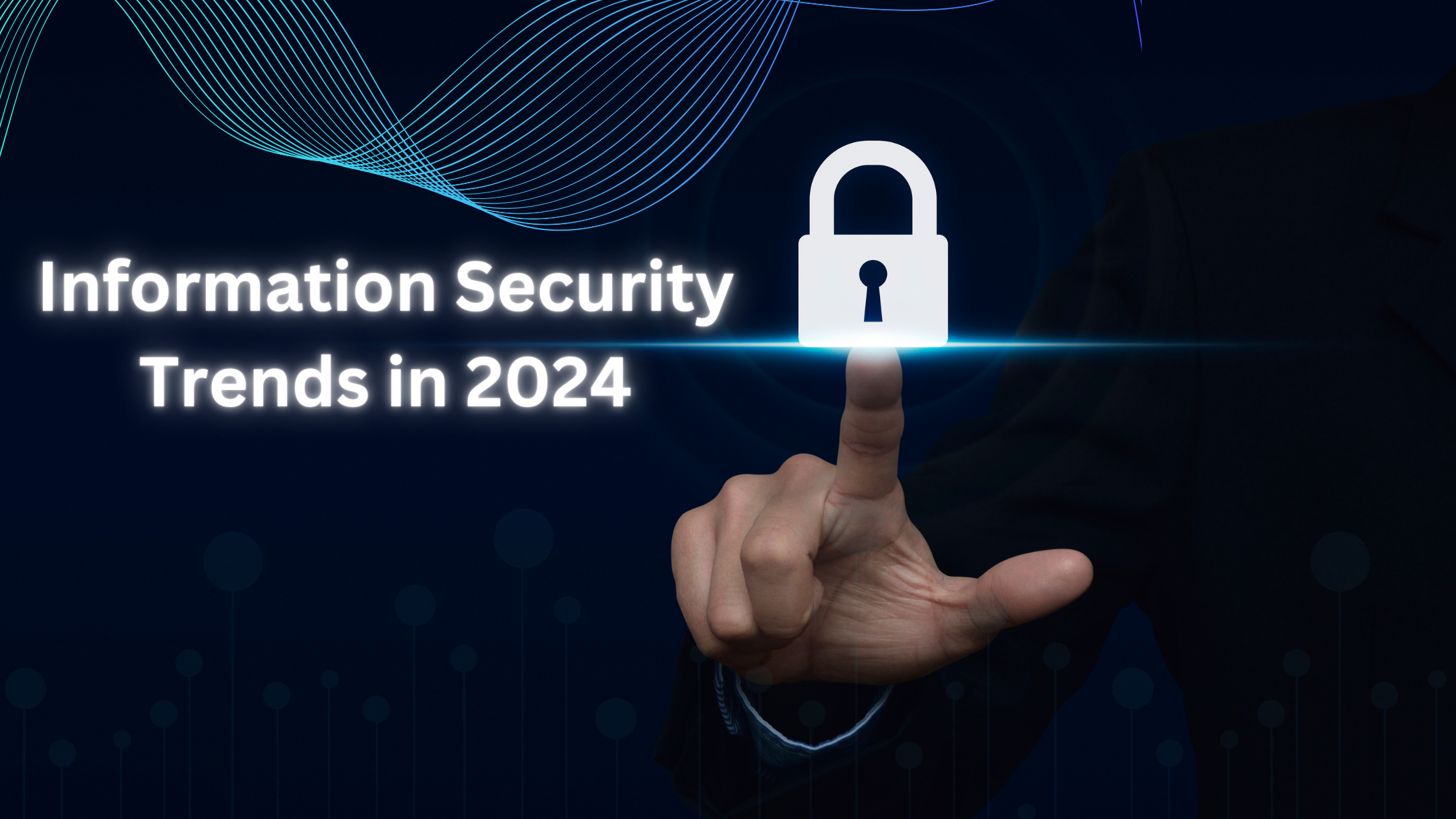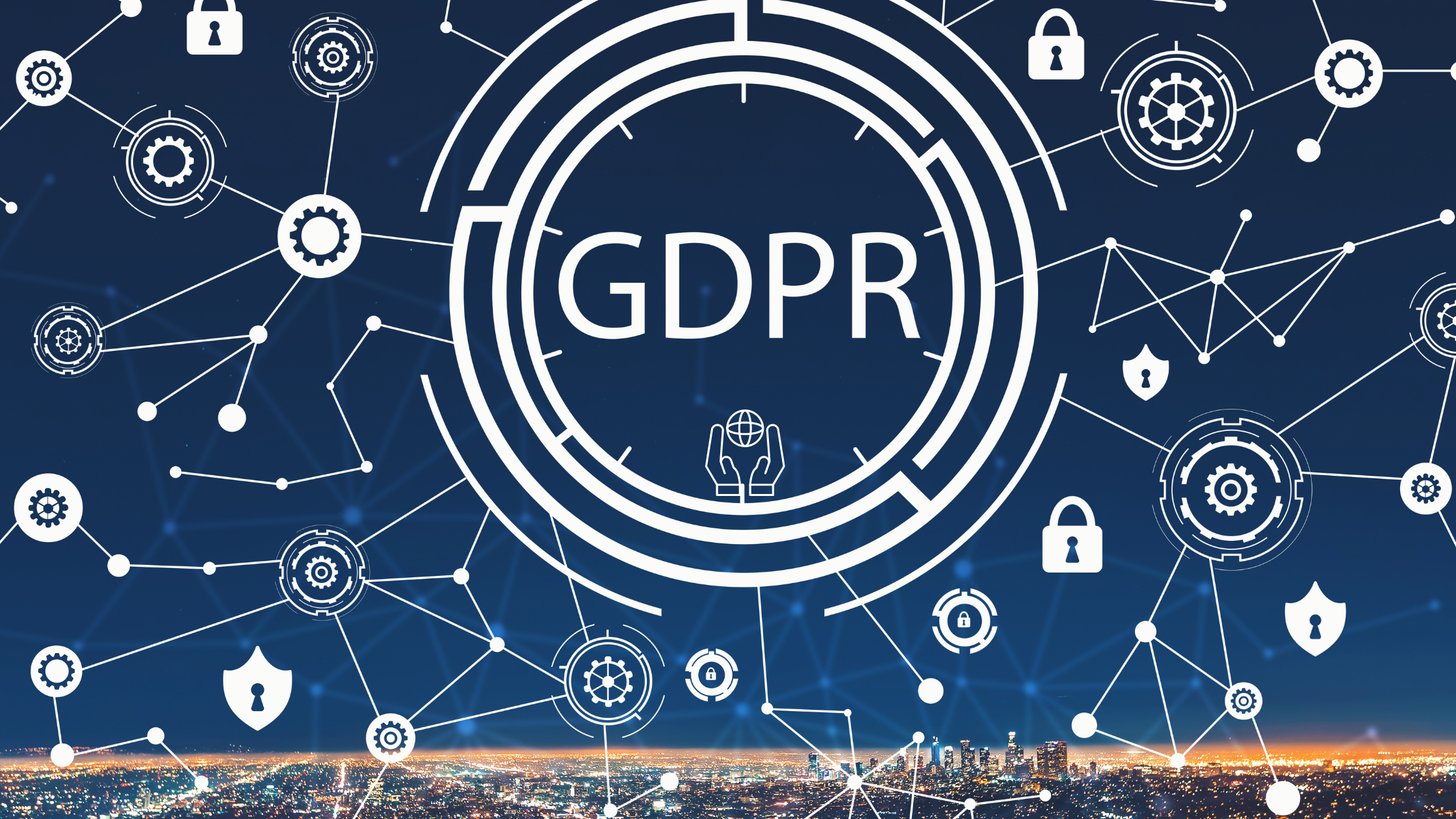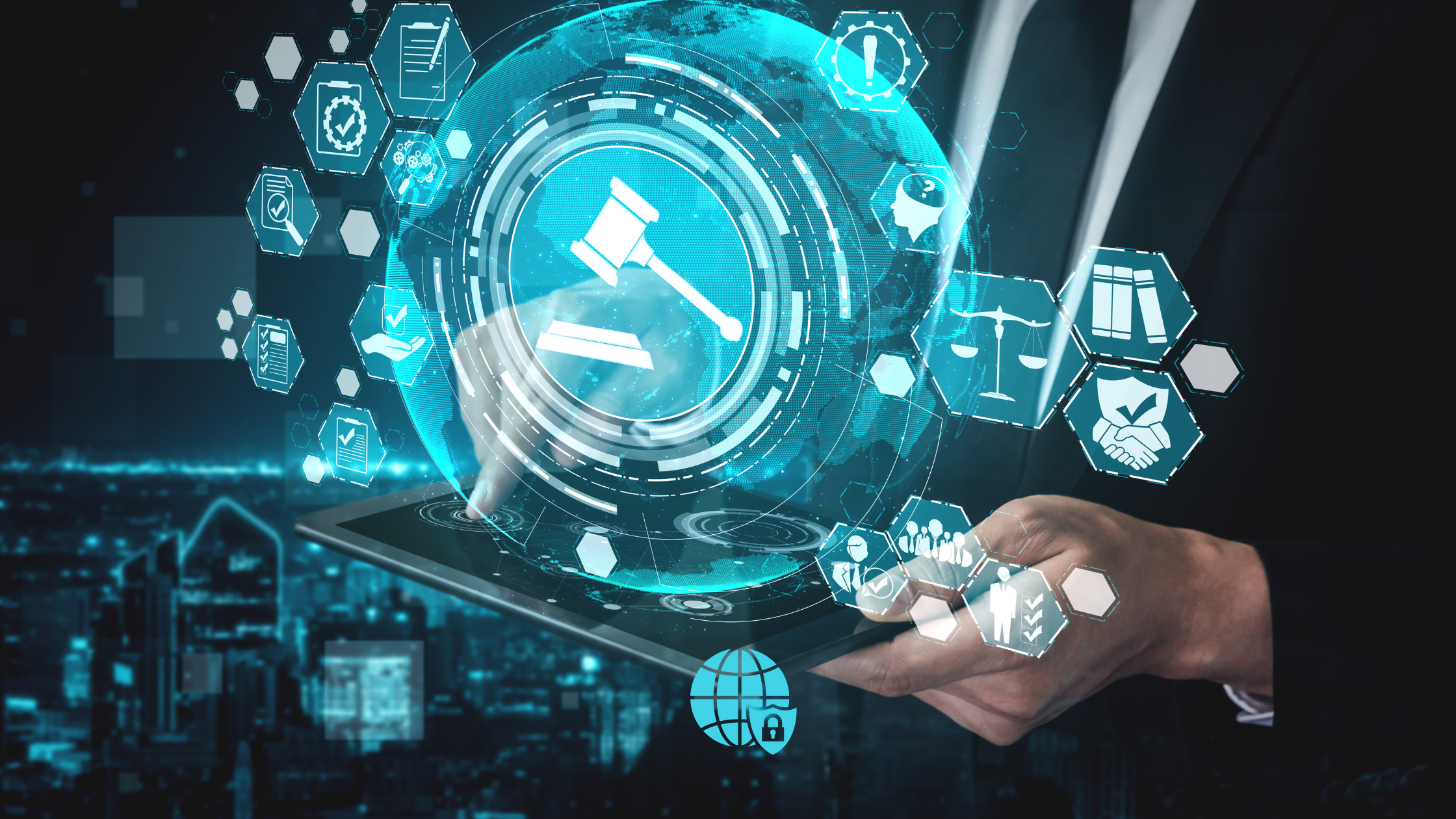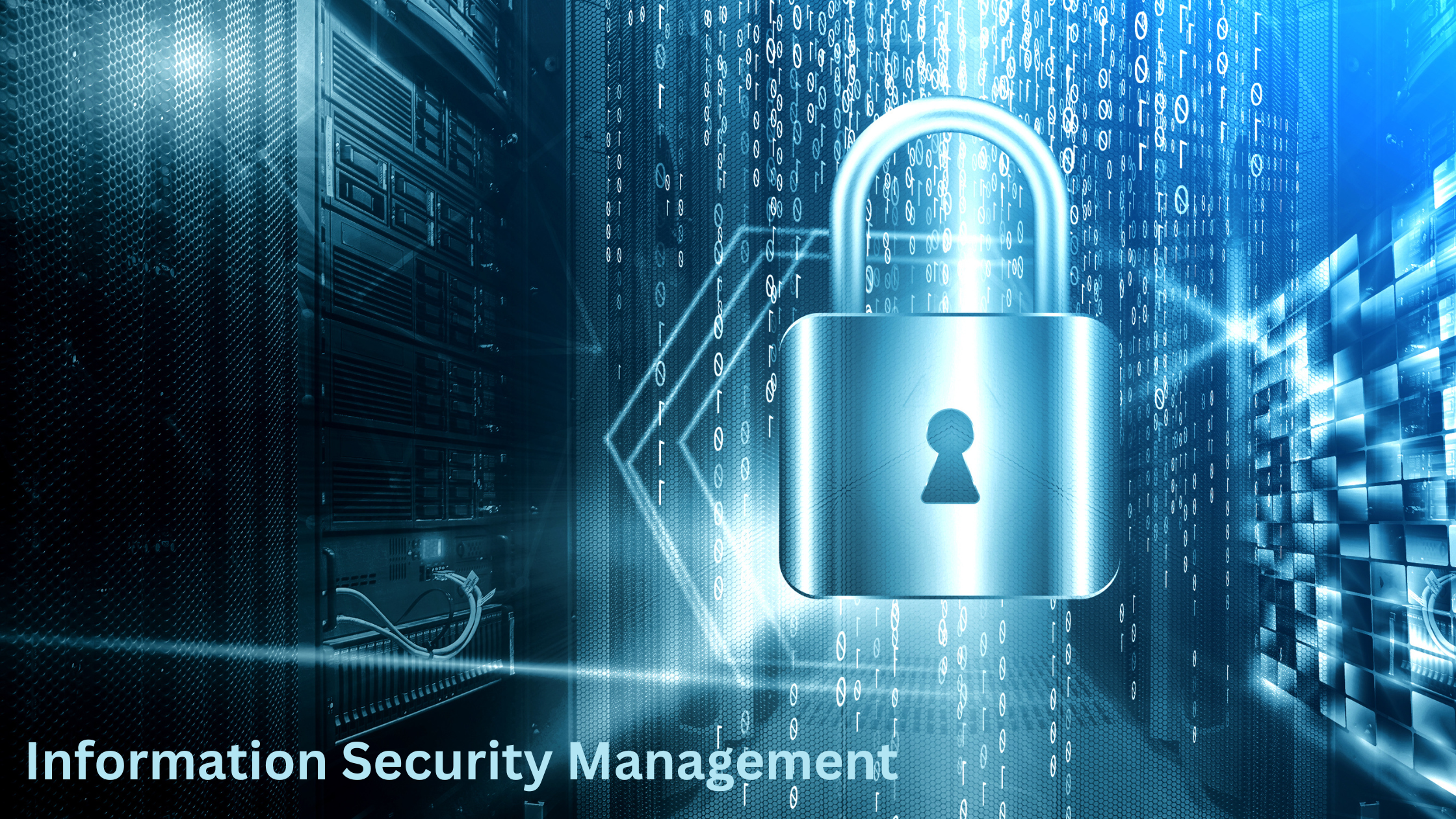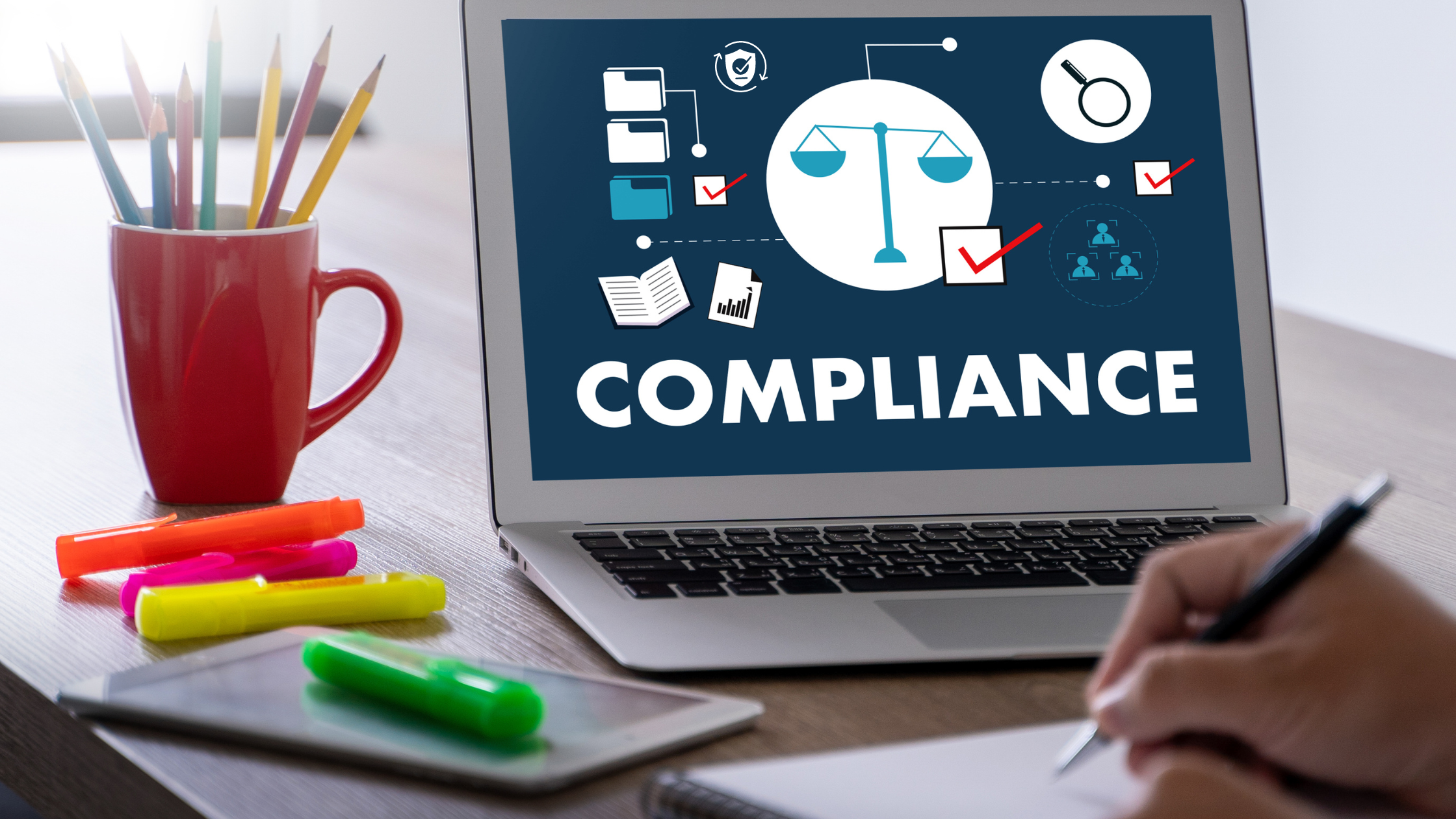Information Security Trends in 2024
In an era where digital transformation is accelerating at an unprecedented pace, the importance of robust information security services has never been more critical. As we navigate through 2024, several trends are shaping the landscape of information security, driven by evolving threats, technological advancements, and regulatory changes. This blog delves into the key information security trends for 2024, providing valuable insights into how organizations can stay ahead in this dynamic environment.
1. Zero Trust Architecture
The Zero Trust model, based on the principle of “never trust, always verify,” has gained significant traction in recent years. In 2024, Zero Trust Architecture (ZTA) remains a fundamental component of information security strategies. This approach requires all users, whether inside or outside the organization’s network, to be authenticated, authorized, and continuously validated before being granted access to applications and data.
Why Zero Trust?
- Increased Threat Landscape: With the rise of sophisticated cyber-attacks, traditional perimeter-based security models are no longer sufficient.
- Remote Work: The shift to remote and hybrid work environments necessitates a more granular approach to security.
- Cloud Adoption: As organizations migrate to the cloud, ensuring secure access to cloud resources is paramount.
Implementing ZTA involves micro-segmentation, multi-factor authentication (MFA), and continuous monitoring to ensure that only legitimate users and devices can access critical resources.
2. AI and Machine Learning in Cybersecurity
Artificial Intelligence (AI) and Machine Learning (ML) are reshaping the landscape of cybersecurity. These technologies enable the development of advanced security solutions that can predict, detect, and respond to threats with greater accuracy and speed.
Key Applications:
- Threat Detection and Response: AI-powered tools can analyze vast amounts of data to identify patterns indicative of malicious activity. They can also automate responses to mitigate threats in real time.
- Behavioral Analysis: ML algorithms can establish baselines of normal behavior for users and devices, making it easier to detect anomalies.
- Fraud Prevention: AI can help detect and prevent fraudulent activities by analyzing transaction patterns and flagging suspicious behavior.
The integration of AI and ML into cybersecurity frameworks enhances an organization’s ability to protect against known and unknown threats, making it a crucial trend for 2024.
3. Cybersecurity Mesh
The cybersecurity mesh is a flexible and scalable approach to security that enables the implementation of security controls where they are most needed. This trend addresses the complexity of securing distributed IT environments, such as those involving multiple cloud services and remote workforces.
Benefits:
- Decentralized Security: Security policies and controls can be applied closer to the assets they protect, improving efficiency and reducing latency.
- Improved Visibility: A unified security architecture provides better visibility into the security posture across different environments.
- Enhanced Resilience: The cybersecurity mesh architecture is designed to be resilient, allowing organizations to quickly adapt to new threats and changes in the IT landscape.
In 2024, adopting a cybersecurity mesh strategy will be essential for organizations aiming to maintain robust security in increasingly complex and distributed environments.
4. Privacy-Enhancing Computation
With data privacy regulations becoming stricter globally, privacy-enhancing computation (PEC) technologies are gaining prominence. These technologies allow organizations to process data securely and privately, ensuring compliance with privacy laws while maintaining the utility of the data.
PEC Techniques:
- Homomorphic Encryption: Enables computations on encrypted data without decrypting it, ensuring data privacy throughout the process.
- Secure Multi-Party Computation: Permits multiple parties to collaboratively compute a function over their inputs while maintaining the privacy of those inputs.
- Differential Privacy: Adds noise to data to protect individual privacy while allowing for aggregate data analysis.
By leveraging PEC technologies, organizations can enhance their data privacy measures, reduce the risk of data breaches, and ensure compliance with regulations such as GDPR and CCPA.
5. Quantum Computing and Post-Quantum Cryptography
Quantum computing poses both opportunities and challenges for information security. While it promises significant advancements in computing power, it also threatens to break existing cryptographic algorithms. In response, the development of post-quantum cryptography (PQC) is a critical trend for 2024.
Quantum Computing Threats:
- Breaking RSA and ECC: Quantum computers have the potential to break widely used encryption algorithms like RSA and Elliptic Curve Cryptography (ECC).
- Data Protection: Organizations need to protect sensitive data from future quantum attacks by adopting quantum-resistant algorithms.
Post-Quantum Cryptography:
- Algorithm Development: Researchers are developing new cryptographic algorithms that are resistant to quantum attacks
- Standardization: International bodies, such as NIST, are working on standardizing PQC algorithms to ensure they are robust and widely adopted.
Organizations must start preparing for the quantum future by staying informed about PQC developments and planning for the transition to quantum-resistant encryption methods.
6. Security Automation and Orchestration
As cyber threats become more sophisticated, manual security processes are increasingly insufficient. Security automation and orchestration tools help organizations streamline their security operations, reduce response times, and improve overall efficiency.
Key Features:
- Automated Incident Response: Automation tools can execute predefined response actions when specific threats are detected, reducing the time to contain and mitigate incidents.
- Orchestration: Integrates various security tools and processes to work together seamlessly, providing a coordinated defense.
- Threat Intelligence Integration: Automatically incorporates threat intelligence feeds into security systems, enhancing the ability to detect and respond to new threats.
By adopting security automation and orchestration solutions, organizations can enhance their ability to defend against cyber-attacks while optimizing their security resources.
7. Cloud Security Posture Management (CSPM)
With the increasing adoption of cloud services, ensuring the security of cloud environments is a top priority. Cloud Security Posture Management (CSPM) tools help organizations manage and secure their cloud infrastructure.
CSPM Capabilities:
- Continuous Monitoring: Provides real-time visibility into the security posture of cloud resources.
- Compliance Management: Ensures that cloud configurations comply with industry standards and regulatory requirements.
- Threat Detection: Identifies and remediates security misconfigurations and vulnerabilities in cloud environments.
In 2024, CSPM tools will be essential for organizations to maintain robust cloud security, prevent data breaches, and ensure compliance with relevant regulations.
8. Identity and Access Management (IAM)
Identity and Access Management (IAM) continues to be a critical component of information security. As organizations adopt more complex IT environments, managing identities and access rights becomes increasingly challenging.
IAM Trends:
- Passwordless Authentication: Reducing reliance on passwords through the use of biometrics, hardware tokens, and other secure authentication methods.
- Identity Governance: Ensuring that access rights are granted appropriately and reviewed regularly to prevent unauthorized access.
- Privileged Access Management (PAM): Managing and monitoring privileged accounts to prevent misuse and insider threats.
By strengthening their IAM practices, organizations can improve their security posture and reduce the risk of unauthorized access to critical systems and data.
9. Regulatory Compliance and Data Protection
Compliance with data protection regulations remains a top priority for organizations worldwide. In 2024, the regulatory landscape continues to evolve, with new laws and updates to existing ones.
Key Regulations:
- GDPR: The General Data Protection Regulation remains a benchmark for data privacy, with ongoing enforcement and updates.
- CCPA/CPRA: The California Consumer Privacy Act and the California Privacy Rights Act impose stringent requirements on businesses handling California residents’ data.
- HIPAA: The Health Insurance Portability and Accountability Act requires healthcare organizations to protect patient data.
Compliance Strategies:
- Data Mapping: Identifying and classifying data to understand how it flows through the organization.
- Regular Audits: Conducting regular audits to ensure compliance with relevant regulations.
- Training and Awareness: Educating employees about data protection requirements and best practices.
Staying compliant with data protection regulations is crucial for avoiding legal penalties and maintaining customer trust.
10. Cyber Resilience and Incident Response
Cyber resilience is an organization’s ability to withstand, react to, and recover from cyber-attacks. As cyber threats continue to evolve, building resilience is more important than ever.
Key Components:
- Incident Response Plans: Developing and regularly updating incident response plans to ensure a quick and effective response to cyber incidents.
- Business Continuity Planning: Ensuring that critical business functions can continue during and after a cyber-attack.
- Disaster Recovery: Implementing disaster recovery plans to restore systems and data after an attack.
By focusing on cyber resilience, organizations can minimize the impact of cyber incidents and ensure the continuity of their operations.
Conclusion
As we move through 2024, the landscape of information security continues to evolve, driven by emerging threats, technological advancements, and regulatory changes. Organizations must stay informed about the latest trends and adopt proactive measures to protect their critical assets. By embracing Zero Trust Architecture, leveraging AI and machine learning, adopting cybersecurity mesh strategies, and focusing on privacy-enhancing computation, organizations can enhance their security posture. Additionally, preparing for quantum computing, automating security processes, managing cloud security, strengthening identity and access management, ensuring regulatory compliance, building cyber resilience, and addressing the human element of security are essential steps in navigating the complex world.



